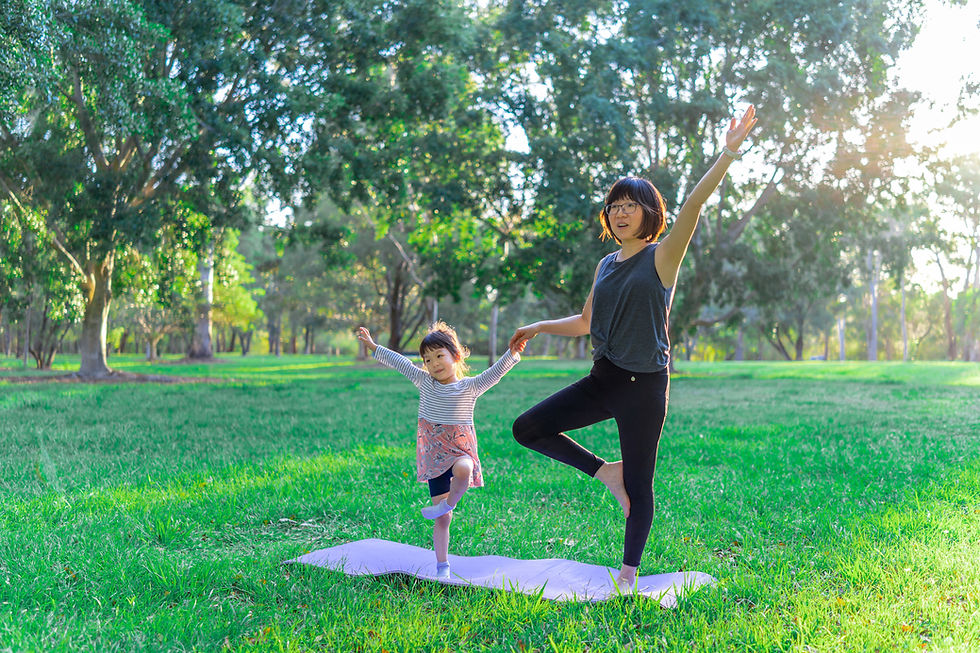The #1 Way to Prevent an Injury from Becoming Chronic: Keep Moving
- Melanie Wintle
- Dec 18, 2024
- 3 min read
Updated: Feb 13

Injuries can be frustrating, and it’s natural to feel the urge to rest and avoid movement. However, staying inactive for too long can often do more harm than good. Movement plays a vital role in recovery and is key to preventing acute injuries from becoming chronic. Drawing from both my personal experiences and over 30 years of clinical practice, I’d like to share why staying active is so important for healing.
A Personal Story
One beautiful day, I was out running, enjoying the fresh air, when I got tangled in my dog’s leash. The next thing I knew, I was airborne, landing awkwardly with a force that left my hamstring screaming in pain. The initial shock was overwhelming, and while my body hurt, my pride took an equally hard hit.
It took me a few moments to collect myself and conduct a quick self-assessment. Years of dealing with athletic injuries, both as a competitive gymnast and rugby player, had taught me that not all pain means serious damage. This was one of those situations. I realized that while moving hurt, the injury wasn’t severe. My biggest priority became clear: avoiding stiffness and promoting circulation to help my body heal.
Was it uncomfortable to move? Absolutely. But discomfort doesn’t always equate to harm. By carefully reintroducing gentle activity into the area, I gradually regained strength and mobility. Over time, consistent movement helped reduce the pain and restore normal function.
Clinical Experience
With over 30 years of experience in rehabilitation, I’ve applied this principle successfully with countless patients. Time and again, I’ve seen how intentional movement can transform recovery outcomes. From athletes to individuals recovering from surgeries or injuries, the power of staying active, within appropriate ranges, is undeniable. This approach doesn’t just prevent stiffness and chronic issues; it also empowers people to take an active role in their healing process.
Why Movement Works
Movement supports recovery in several key ways:
Improved Circulation: When you move, your blood flow increases, delivering essential nutrients and oxygen to the injured area. This accelerates the body’s natural healing processes.
Reduced Stiffness: Prolonged inactivity can lead to stiff muscles and joints, making movement even more difficult. Gentle motion helps maintain flexibility and prevents the formation of scar tissue that can limit mobility.
Pain Management: Movement triggers the release of endorphins, the body’s natural painkillers. These chemicals can help reduce discomfort and improve your overall sense of well-being during recovery.
Neuromuscular Reconnection: Injuries can disrupt the communication between your brain and muscles. Controlled movement helps retrain these pathways, improving coordination and function as you heal.
Prevention of Chronic Issues: Staying active reduces the risk of compensatory movement patterns, where other parts of your body overcompensate for the injured area. These patterns can lead to secondary injuries or chronic pain.
Pain vs. Harm
One of the most valuable lessons in recovery is understanding the difference between pain and harm. Not all pain is harmful. When you move through pain thoughtfully and with intention, you’re not causing further damage, you’re promoting healing. Of course, this doesn’t mean pushing through severe pain or ignoring your body’s signals. It means understanding what your body needs and taking gradual, deliberate steps toward recovery.
Healing Through Motion
If you’ve experienced an injury, don’t underestimate the power of movement. Small, intentional steps can make a big difference in how your body heals. Whether you’re a seasoned athlete or simply navigating daily life, remember that staying mobile, even when it feels uncomfortable, can prevent chronic issues and support your body’s natural healing process.
Need guidance on a personalized exercise and rehabilitation plan to manage an acute or chronic injury? Get started today
Disclaimer:
This site offers health, fitness and nutritional information and is designed for educational purposes only. You should not rely on this information as a substitute for, nor does it replace, professional medical advice, diagnosis, or treatment. If you have any concerns or questions about your health, you should always consult with a physician or other health-care professional. Do not disregard, avoid or delay obtaining medical or health related advice from your health-care professional because of something you may have read on this site. The use of any information provided on this site is solely at your own risk.
.png)



Comments